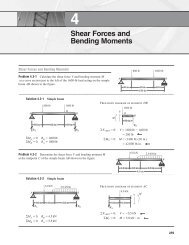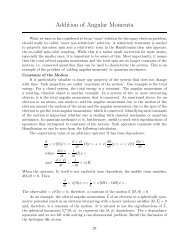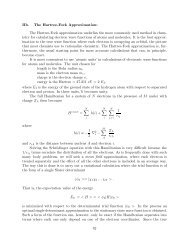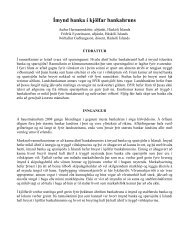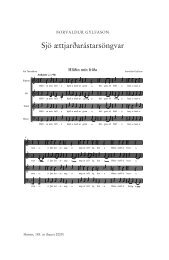The Role of Violent Video Game Content in
The Role of Violent Video Game Content in
The Role of Violent Video Game Content in
You also want an ePaper? Increase the reach of your titles
YUMPU automatically turns print PDFs into web optimized ePapers that Google loves.
Olson et al. / <strong>Violent</strong> <strong>Video</strong> <strong>Game</strong>s and Adolescent Boys 69<br />
[Moderator: Is there anyth<strong>in</strong>g you th<strong>in</strong>k you shouldn’t be allowed to play at your<br />
age?]<br />
Well . . . sort <strong>of</strong> like <strong>The</strong> Sims. (Boy 34)<br />
Yeah, Sims, because they go to, like . . . (Boy 31)<br />
<strong>The</strong>y go to, like, people and like . . . (Boy 34)<br />
Kiss. (Boy 31)<br />
<strong>The</strong>se two boys agreed with a third that see<strong>in</strong>g kiss<strong>in</strong>g <strong>in</strong> a game was okay<br />
at age 15.<br />
Discussion<br />
Much <strong>of</strong> the current debate on youth and media has focused, perhaps<br />
excessively, on potential harms and limit<strong>in</strong>g use (Christakis & Zimmerman,<br />
2006). This study adds balance by highlight<strong>in</strong>g some developmentally<br />
appropriate uses <strong>of</strong> electronic games.<br />
<strong>The</strong> boys we spoke with were articulate about their attitudes and behavior<br />
regard<strong>in</strong>g video games. Boys from a range <strong>of</strong> racial/ethnic and socioeconomic<br />
backgrounds used games <strong>in</strong> similar ways and raised similar themes. Boys use<br />
violent games specifically (a) as a means to express fantasies <strong>of</strong> power and<br />
glory, (b) to explore and master what they perceived as excit<strong>in</strong>g and realistic<br />
environments, and (c) as a tool to work out their feel<strong>in</strong>gs <strong>of</strong> anger and stress.<br />
<strong>Game</strong>s—especially violent or sports games—are also social tools that allow<br />
boys to compete with and/or work cooperatively with peers. Boys ga<strong>in</strong> status<br />
among peers by own<strong>in</strong>g or master<strong>in</strong>g these popular games. This supports the<br />
idea that video game play with violent content may serve a function similar to<br />
rough-and-tumble play for young adolescent boys.<br />
Most boys did not believe that they were negatively <strong>in</strong>fluenced by violent<br />
games. All boys believed that they knew the difference between behaviors<br />
that are rewarded <strong>in</strong> games and behaviors <strong>in</strong> real life. <strong>The</strong>y clearly dist<strong>in</strong>guished<br />
between antisocial or violent behaviors that were unlikely to occur <strong>in</strong><br />
their lives (e.g., us<strong>in</strong>g powerful weapons and steal<strong>in</strong>g cars) and those that<br />
were likely to occur (e.g., swear<strong>in</strong>g and <strong>in</strong>timidation). In dist<strong>in</strong>guish<strong>in</strong>g<br />
between real life and the game world, they focused on actions rather than<br />
realism <strong>of</strong> graphic depictions. <strong>The</strong>se results are consistent with Malliet’s<br />
(2006) study <strong>of</strong> perceptions <strong>of</strong> video game realism among 32 Belgian older<br />
teens and young adults; he found that players made nuanced dist<strong>in</strong>ctions<br />
between the context <strong>of</strong> the game world and the context <strong>of</strong> reality.<br />
Downloaded from<br />
http://jar.sagepub.com at Iceland Telecom on February 16, 2009









